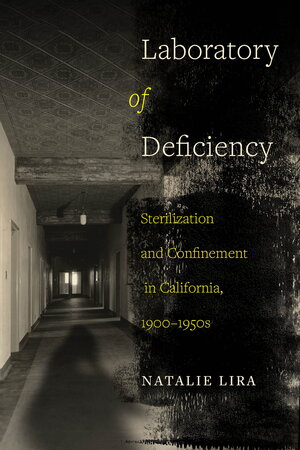
Laboratory of Deficiency: Sterilization and Confinement in California, 1900–1950s
(2021 University of California Press)
Pacific Colony, a Southern California institution established to care for the “feebleminded,” justified the incarceration, sterilization, and forced mutilation of some of the most vulnerable members of society from the 1920s through the 1950s. Analyzing a vast archive, Natalie Lira reveals how political concerns over Mexican immigration—particularly ideas about the low intelligence, deviant sexuality, and inherent criminality of the “Mexican race”—shaped decisions regarding the treatment and reproductive future of Mexican-origin patients. Laboratory of Deficiency documents the ways Mexican-origin people sought out creative resistance to institutional control and offers insight into how race, disability, and social deviance have been called upon to justify the confinement and reproductive constraint of certain individuals in the name of public health and progress.
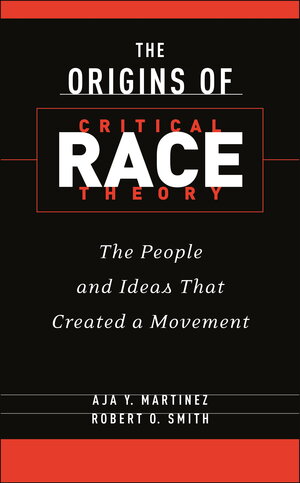
The Origins of Critical Race Theory: The People and Ideas That Created a Movement
Aja Y. Martinez and Robert O. Smith
(2025 New York University Press)
The Origins of Critical Race Theory weaves together the many sources of critical race theory, recounting the origin story for one of the most insightful and controversial academic movements in U.S. history. In addition to introducing readers to the tenets and key insights of critical race theory, Martinez and Smith explore the lives and intellectual influences of the movement’s founders, shedding light on how the many components of critical race theory eventually formed into a movement.
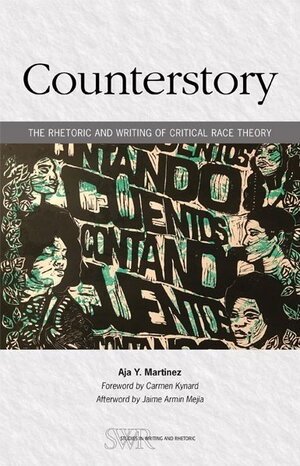
Counterstory: The Rhetoric and Writing of Critical Race Theory
(2020 National Council of Teachers of English)
Winner of the 2023 CCCC Outstanding Book Award and the CCCC Advancement of Knowledge Award
Named one of the 20 Best New Rhetoric Books to Read in 2021 by BookAuthority
Winner of the 2021 Vision Award from the Coalition for Community Writing
Martinez makes a compelling case for counterstory as methodology in rhetoric and writing studies through the well-established framework of critical race theory (CRT), reviewing first the counterstory work of Richard Delgado, Derrick Bell, and Patricia J. Williams, whom she terms counterstory exemplars. Arguing that counterstory provides opportunities for marginalized voices to contribute to conversations about dominant ideology, Martinez applies racial and feminist rhetorical criticism to the rich histories and theories established through counterstory genres, all the while demonstrating how CRT theories and methods can inform teaching, research, and writing/publishing of counterstory.
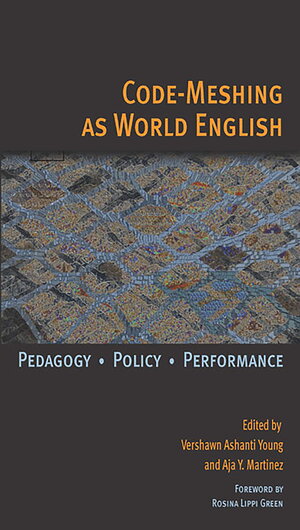
Code-Meshing as World English: Pedagogy, Policy, Performance
Edited by Vershawn Ashanti Young and Aja Y. Martinez
(2011 National Council of Teachers of English)
The original essays in this collection offer various perspectives on why code-meshing―blending minoritized dialects and world Englishes with Standard English―is a better pedagogical alternative than code-switching in the teaching of reading, writing, listening, speaking, and visually representing to diverse learners. This collection argues that code-meshing rather than code-switching leads to lucid, often dynamic prose by people whose first language is something other than English, as well as by native English speakers who speak and write with “accents” and those whose home language or neighborhood dialects are deemed “nonstandard.” While acknowledging the difficulties in implementing a code-meshing pedagogy, editors Vershawn Ashanti Young and Aja Y. Martinez, along with a range of scholars from international and national literacy studies, English education, writing studies, sociolinguistics, and critical pedagogy, argue that all writers and speakers benefit when we demystify academic language and encourage students to explore the plurality of the English language in both unofficial and official spaces.
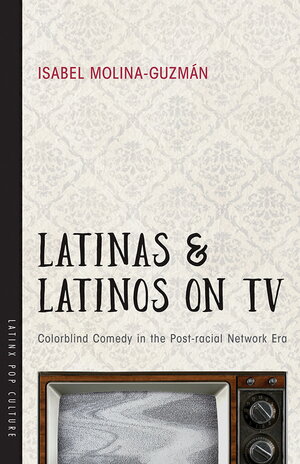
Latinas and Latinos on TV: Colorblind Comedy in the Post-racial Network Era
(2018 University of Arizona Press)
Interweaving discussions about the ethnic, racial, and linguistic representations of Latinas/os within network television comedies, Isabel Molina-Guzmán probes published interviews with producers and textual examples from hit programs like Modern Family, The Office, and Scrubs to understand how these primetime sitcoms communicate difference in the United States.
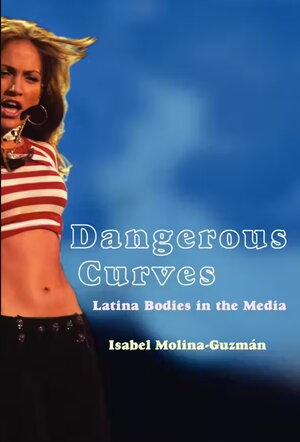
Dangerous Curves: Latina Bodies in the Media
(2010 New York University Press)
With images of Jennifer Lopez’s butt and America Ferrera’s smile saturating national and global culture, Latina bodies have become an ubiquitous presence. Dangerous Curves traces the visibility of the Latina body in the media and popular culture by analyzing a broad range of popular media including news, media gossip, movies, television news, and online audience discussions.
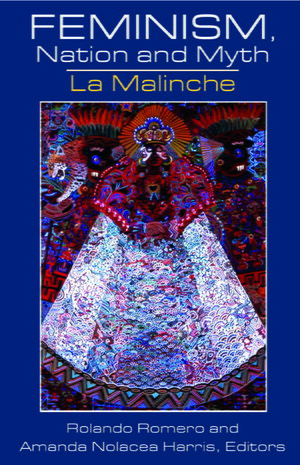
Feminism, Nation and Myth: La Malinche
Edited by Rolando Romero and Amanda Nolacea Harris
(2005 Arte Publico Press)
Drawing from the humanities and the social sciences to interrogate the development of feminism, queer studies, and Latina/o studies, the editors of this volume examine the literary and cultural debates the figure of la Malinche has generated in critical circles by addressing the state and direction of Malinche scholarship.
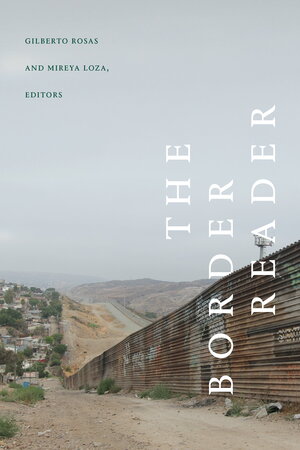
The Border Reader
Edited by Gilberto Rosas and Mireya Loza
(2023 Duke University Press)
The Border Reader brings together canonical and cutting-edge humanities and social science scholarship on the US-Mexico border region. Spotlighting the vibrancy of border studies from the field’s emergence to its enduring significance, the essays mobilize feminist, queer, and critical ethnic studies perspectives to theorize the border as a site of epistemic rupture and knowledge production. The chapters speak to how borders exist as regions where people and nation-states negotiate power, citizenship, and questions of empire. Among other topics, these essays examine the lived experiences of the diverse undocumented people who move through and live in the border region; trace the gendered and sexualized experiences of the border; show how the US-Mexico border has become a site of illegality where immigrant bodies become racialized and excluded; and imagine anti- and post-border futures.
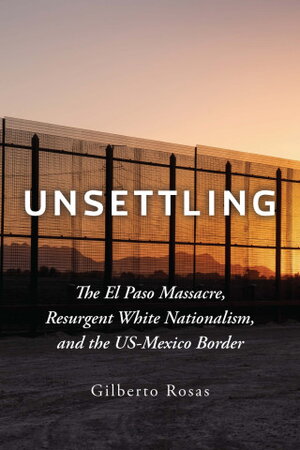
Unsettling: The El Paso Massacre, Resurgent White Nationalism, and the US-Mexico Border
(2023 John Hopkins University Press)
Honorable Mention for the American Ethnological Society Senior Book Prize
On August 3, 2019, a far-right extremist committed a deadly mass shooting at a major shopping center in El Paso, Texas, a city on the border of the United States and Mexico. In Unsettling, Gilberto Rosas situates this devastating shooting as the latest unsettling consequence of our border crisis and currents of deeply rooted white nationalism embedded in the United States. Tracing strict immigration policies and inhumane border treatment from the Clinton era through Democratic and Republican administrations alike, Rosas shows how the rhetoric around these policies helped lead to the Trump administration's brutal crackdown on migration—and the massacre in El Paso. Rosas draws on poignant stories and compelling testimonies from workers in immigrant justice organizations, federal public defenders, immigration attorneys, and human rights activists to document the cruelties and indignities inflicted on border crossers.
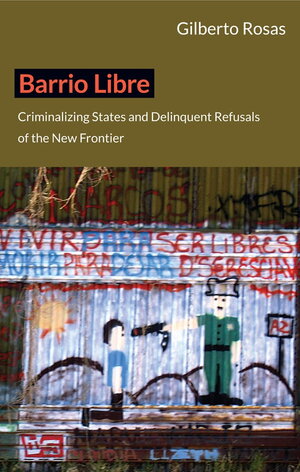
Barrio Libre: Criminalizing States and Delinquent Refusals of the New Frontier
(2012 Duke University Press)
Winner of the 2014 ALLA Book Award
The city of Nogales straddles the border running between Arizona and Sonora, Mexico. On the Mexican side, marginalized youths calling themselves Barrio Libre (Free 'Hood) employ violence, theft, and bribery to survive, often preying on undocumented migrants who navigate the city's sewer system to cross the US-Mexico border. In this book, Gilberto Rosas draws on his in-depth ethnographic research among the members of Barrio Libre to understand why they have embraced criminality and how neoliberalism and security policies on both sides of the border have affected the youths' descent into Barrio Libre.
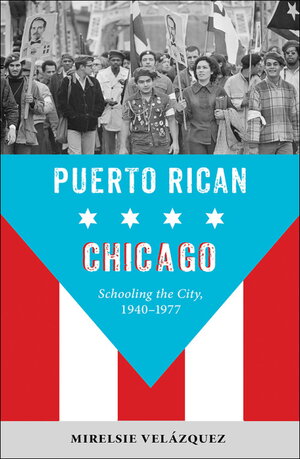
Puerto Rican Chicago: Schooling the City, 1940-1977
(2022 University of Illinois Press)
Winner of the 2023 Critics' Choice Book Award from the American Educational Studies Association
Mirelsie Velázquez tells how Chicago's Puerto Ricans pursued their educational needs in a society that constantly reminded them of their status as second-class citizens. Communities organized a media culture that addressed their concerns while creating and affirming Puerto Rican identities. Education also offered women the only venue to exercise power, and they parlayed their positions to take lead roles in activist and political circles. In time, a politicized Puerto Rican community gave voice to a previously silenced group--and highlighted that colonialism does not end when immigrants live among their colonizers. A perceptive look at big-city community building, Puerto Rican Chicago reveals the links between justice in education and a people's claim to space in their new home.

Fugitive Anthropology: Embodying Activist Research
Co-edited by Elizabeth Velásquez Estrada, Shanya Cordis, Maya J. Berry, Claudia Chávez Argüelles, Sarah Ihmoud
(2025 University of Texas Press)
Fugitive Anthropology is a transnational, intergenerational engagement that extends feminist theory, activist research methodologies, and the discipline of anthropology in new directions. Contributors examine the tensions that arise from conducting politically engaged, collaborative research alongside communities in struggle, in particular theorizing from the experiences of racialized women, queer, trans, and gender nonconforming researchers across distinct geographies. Essays contend with the matrices of colonial, imperial, and patriarchal violence that afflict the researchers and communities with which they seek political alignment.